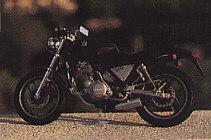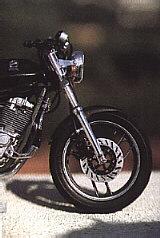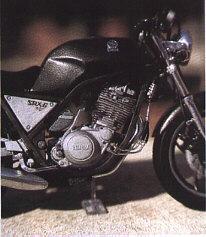

| In this age of multicylinder, semi-racers and complex motorcycles with aerodynamic fairngs, Yamaha chose to introduce the simple and charming SRX-6 with a 608cc single-cylinder, acceptable performance and a unique mixture of elements from yesteryear, along with today's technological concepts... | 
|
 |
| (Click on above image, to view it larger) |